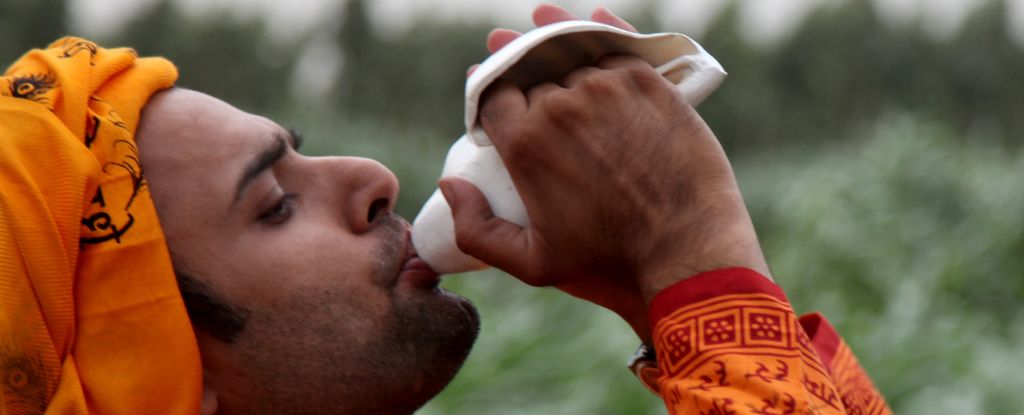
Research indicates that blowing through a conch shell may serve as a novel treatment for obstructive sleep apnea (OSA), a condition affecting nearly one billion adults globally. A recent randomized controlled trial has found that participants who engaged in a traditional exercise using a conch shell experienced improved sleep quality compared to those who practiced deep breathing.
The study, conducted with 30 adult participants diagnosed with moderate OSA, divided the group into two. Half practiced a technique called shankh, which involves blowing into a conch shell. The other half focused on deep, slow breathing through the nose and out through a relaxed mouth.
Participants practicing the conch technique reported feeling 34 percent less sleepy during the day. Sleep monitors confirmed that this group experienced up to five fewer apneas each night and achieved significantly higher blood oxygen levels while sleeping.
Potential Alternative to Conventional Treatments
Dr. Krishna K. Sharma, a pulmonologist at the Eternal Heart Care Centre and Research Institute in Jaipur, India, explained the challenges with traditional OSA treatments. “The standard treatment for OSA is a continuous positive airway pressure machine, or CPAP,” he noted. “While effective, many patients find it uncomfortable and struggle to use it consistently.”
Regular breathing exercises like conch blowing could provide a more comfortable alternative. Participants in the trial practiced the shankh technique for 15 minutes a day, five days a week, following a formal lesson on the yogic practice.
Dr. Sharma elaborated, “The way the shankh is blown is quite distinctive. It involves a deep inhalation followed by a forceful, sustained exhalation through tightly pursed lips. This action creates strong vibrations and airflow resistance, likely strengthening the muscles of the upper airway, including the throat and soft palate.”
Next Steps for Research
Despite the promising results, Dr. Sharma acknowledges that the initial trial was small and not blinded. He emphasized the need for further research, stating that he and his colleagues are planning a larger trial at multiple hospitals to validate their findings in a more diverse cohort.
“We’re particularly interested in comparing shankh blowing with standard treatments like CPAP and examining its potential help in more severe forms of OSA,” he added.
The study’s findings were published in ERJ Open Research in March 2024, marking a significant step in exploring alternative therapies for a widespread health issue. As research progresses, conch blowing may emerge as a viable option for those seeking relief from the burdens of sleep apnea.






